Are you a Quiet Speculation member?
If not, now is a perfect time to join up! Our powerful tools, breaking-news analysis, and exclusive Discord channel will make sure you stay up to date and ahead of the curve.
For most players, this week is the start of the Modern PPTQ season. Technically it started last week, but many of those PPTQs were Sealed to coincide with Hour of Devastation's release. Hopefully you have chosen your deck and are getting in the reps you need. This is Modern, master your deck—you've heard this before. What you might not have heard is how to prepare for the metagame. I'm going to describe my methods this week.

Every serious player devours metagame data. We want to win and will look for any edge. This is a good thing; decisions based on facts and data tend to be good. However, that data has to be applicable first. Relying on aggregate metagame data is a trap for PPTQ players. Those projections, standings, and data sets are tools to explain the total metagame. Unless you're going to a GP-level event with players from all over the state and country present, you're not going to see that entire metagame. At local events you're going to see a local metagame, and understanding how that differs from the national trend is the key to successful preparation.
A Metaphor and a Stats Conundrum
I'm sure everyone intuitively understands what I'm talking about, but I'm not leaving it to chance. Imagine each deck is a drop of oil paint. Placing each drop into a tank of water forms the entire metagame. Each drop floats alongside all the other drops in an oddly mesmerizing mosaic. A tournament is taking a plastic square and blocking off a section of that tank. The decks at the tournament are all the drops inside that square. When we do metagame analysis we stir the waters so that the colors separate out and we can see their relative quantity and draw conclusions. This is intended to inform us of the probabilities of seeing a given deck at a tournament and the relative strength of each deck.
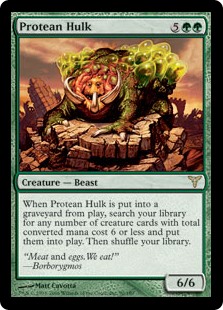 As a result, the larger the square the more likely it is to accurately reflect that analysis. Smaller cubes are more likely to miss a color entirely, or even contain some that the big analysis will filter out. How many FMN metas contain lots of janky weirdness that never shows up on any standings? Mine definitely does. As a result, statistical modeling breaks down on the small scale. This is natural. Statistical analysis is intended to take lots of little numbers, aggregate them, and then model the totality of reality. The smaller the scale you're working with, the harder it is to get meaningful results. I've mentioned this about my sample sizes in previous banlist tests. This is why statistical analysis is great for looking at crime trends in an entire state, but if you want to examine a specific neighborhood you need to send in an expendable sociology student with surveys.
As a result, the larger the square the more likely it is to accurately reflect that analysis. Smaller cubes are more likely to miss a color entirely, or even contain some that the big analysis will filter out. How many FMN metas contain lots of janky weirdness that never shows up on any standings? Mine definitely does. As a result, statistical modeling breaks down on the small scale. This is natural. Statistical analysis is intended to take lots of little numbers, aggregate them, and then model the totality of reality. The smaller the scale you're working with, the harder it is to get meaningful results. I've mentioned this about my sample sizes in previous banlist tests. This is why statistical analysis is great for looking at crime trends in an entire state, but if you want to examine a specific neighborhood you need to send in an expendable sociology student with surveys.
For this reason, PPTQ players should regard the total metagame data as a general guide. For reasons I'll be going into shortly, it is unlikely that a given PPTQ will model the aggregated data. Instead, you should regard those stats as an a priori (theoretical) assumption and point of departure for your analysis, not as the end point.
Who's Your Local Meta?
For me the most basic question is, "Who else is going?" Obviously, you can't know exactly who will be there (unless you're a time traveler or precog), since some players won't decide to go until that morning, and others may have spent weeks planning only for something unexpected to arise. (As in the trip car's transmission blows half an hour in because the driver's mechanic didn't actually fix the 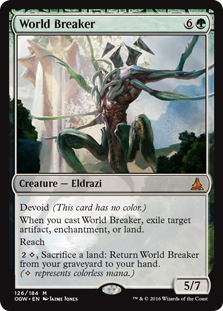 problem, despite billing as if he did, and then despite the ruined trip absolutely not being the driver's fault, the rest of the car never quite forgives him.) You can however get a sense of who might go and what they are likely to play.
problem, despite billing as if he did, and then despite the ruined trip absolutely not being the driver's fault, the rest of the car never quite forgives him.) You can however get a sense of who might go and what they are likely to play.
See, PPTQs don't draw that wide an audience. Every early- to midseason PPTQ I've ever been to had five rounds and about 30 players. The only times they're smaller than 20 is when TOs have deliberately and aggressively limited participation, and they're only bigger towards the end when everyone's desperate. There are a lot of PPTQs in a season (in most places) so there's less incentive to drive for hours to make one. As a result most of the participants will be local players. Therefore you should know what at least 50% of a given field is just by being a member of your Magic community. Most players play the same deck at every event, either by choice or necessity, so whatever you see winning at FNM will also be at the PPTQ.
Gather Information
Of course this is not universally true; plenty of players will bring their janky fun to FNM because it's FNM and you'll never see their real deck. You need to look deeper to find out their preferences. You can also never forget the impact of big names on a metagame. When decks get a lot of coverage and pros extoll their virtues, players listen. Sam Black was partially responsible for Death's Shadow's rise by constantly hyping the deck. Decks that get a lot of press the week before an event will be more prevalent. Pay attention and plan accordingly.
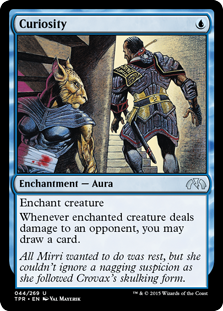 Therefore, just listen to what your fellow players are saying. Even those who intend to play a different deck at every event or never publicly say what they're playing have opinions and will share them readily. Whether it's chatter between matches or social media discussions, you can find out what players in your area are thinking. This gives you a sense of their perception of the metagame and how they're preparing. Oftentimes players will reveal their deck choice just by revealing their biases.
Therefore, just listen to what your fellow players are saying. Even those who intend to play a different deck at every event or never publicly say what they're playing have opinions and will share them readily. Whether it's chatter between matches or social media discussions, you can find out what players in your area are thinking. This gives you a sense of their perception of the metagame and how they're preparing. Oftentimes players will reveal their deck choice just by revealing their biases.
Of course, don't be deceptive or manipulative about finding this. Having a reputation as a sketchy or manipulative player is bad. It's a great way to end up shunned and banished from the community. Don't pressure players to divulge information or leak confidential information. All I'm saying is that people talk and if you pay attention to conversations you will learn all you need.
Who Else May Come
It's also important to consider those players who will travel to the event. Some enjoy the trip, others have to because they don't have many where they live. Every region will also have a significant grinder population that will absolutely attend every event they can until victory is achieved. And everyone knows who they are. You see the real grinders at every event, you hear them constantly chattering about matchups and the meta, and other players talk about them. I'm a well-known grinder in my state, everyone knows the decks I favor, and I have the same information about the other compulsive grinders I hit every weekend. If you don't already know, just ask. Reputations are powerful and useful things.
What's Your Regional Quirk?
The final thing to consider is your region's reputation. The metas of many US states have quirks or favor certain types of deck over others, regardless of format or season. Colorado is notoriously red-heavy, while I've heard that Virginia's meta is so spikey thanks to Star City Games being there that the metagame charts are perfectly accurate. This is not necessarily accurate, but it can help guide your decisions.
Put It Together
The biggest question for me facing the first PPTQ Saturday is my deck choice. I have a number of decks that I'm very practiced with in this meta and I have a good sense of how they fare against the tiered decks. Picking which deck to register comes down to my read of the metagame and the best-positioned deck for this week. And you always have to consider this on a weekly basis—players at this PPTQ will react to what they saw for next week. Never rely on outdated reads or reasoning if you want to metagame. The decks I'm considering are UW Merfolk, Mono-White Death and Taxes, and UW Control.
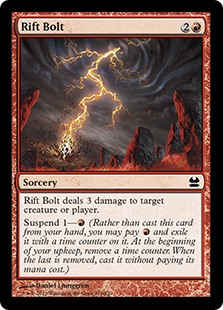 As I mentioned, Colorado has had a reputation for being a Burn state for a very long time. It's not undeserved. It also tends to have lots of Jund and Tron. This has been the trend, but it isn't guaranteed. My local game store is arguably the center of Modern in the Denver area. We have the most Modern tournaments and the highest turnout every week. There has been a high amount of Burn and Tron, with Eldrazi recently having the edge on traditional Gx, but Jund has disappeared and there's only one GB Rock player left. Some have simply been turned off by all the Tron, others jumped ship to Death's Shadow. There has also been a surge in Living End and Affinity, both of which were big players two years ago but disappeared last year. Generally, every player talks about their deck as their deck and plays them at every event, so I'm not worried about left-field choices.
As I mentioned, Colorado has had a reputation for being a Burn state for a very long time. It's not undeserved. It also tends to have lots of Jund and Tron. This has been the trend, but it isn't guaranteed. My local game store is arguably the center of Modern in the Denver area. We have the most Modern tournaments and the highest turnout every week. There has been a high amount of Burn and Tron, with Eldrazi recently having the edge on traditional Gx, but Jund has disappeared and there's only one GB Rock player left. Some have simply been turned off by all the Tron, others jumped ship to Death's Shadow. There has also been a surge in Living End and Affinity, both of which were big players two years ago but disappeared last year. Generally, every player talks about their deck as their deck and plays them at every event, so I'm not worried about left-field choices.
Looking to the other known spikes and grinders, there are several wildcards. There is a community of combo enthusiasts based at the School of Mines who sometimes come, as well as a significant cabal of Collected Company captains from all over. A sizeable group often comes down from Wyoming during PPTQ season but I know very little about their deck preferences. The usual grinders are split between just playing the best decks and weird metagamed decks. However, a number have started talking about and testing UWx control decks and they're starting to win local tournaments. This leaves me thinking that Affinity, Burn, and Tron of both varieties will certainly be present, with Death's Shadow, UWx control, and Living End likely to be there. Thus I'll be picking my deck and sideboard based on these six decks. You can't predict what combos or brews will show, so don't try. Most of your sideboard cards will work against them anyway.
What Does It Mean?
The whole point of metagaming is to maximize your odds of only hitting good matchups while avoiding bad ones. Given the expected metagame, I see the field like this:
| Burn | Affinity | Tron | Living End | Grixis Shadow | UWx Control | |
|---|---|---|---|---|---|---|
| Merfolk | Good | Bad | Fair | Good | Good | Good |
| Death and Taxes | Good | Good | Very Good | Fair | Good | Bad |
| UW Control | Good | Good | Fair | Very Good | Good | Fair |
Now, based on this chart Merfolk seems like the weakest choice: the matchups are generally good but not spectacular and you have the very bad Affinity to consider. DnT is generally strong against the field but I have consistently struggled against control decks, particularly the Jeskai lists many appear to favor. UW doesn't have any truly bad matchups, which indicates that it is the best choice. However, that isn't the end of things because you have to consider what will happen if everyone draws the same conclusions as you.
Mirror Mirror
The final thing to consider is the mirror. How likely are you to face a mirror match, and how well prepared are you for one? If you're really weak to the mirror, either because you're unpracticed or you've metagamed away from the mirror, it may be fine if you're unlikely to face it. If you've got a brew, you can ignore the mirror. Playing a Tier 1 deck is more dicey; there's a much higher chance other players will play your deck. In the Merfolk mirror, I have a huge edge because I play Path to Exile and more non-islands than anyone else. There's not much in the sideboard except Echoing Truth, but I don't expect more than one other Merfolk player at any tournament, so why worry? I've also been playing the deck so long I've had plenty of practice.
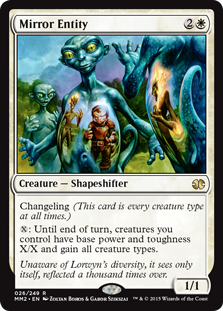 For UW Control I'm more worried. As I noted above, there's been an upsurge in UW recently. While my technical play in the mirror is good thanks to years playing the deck, my deck is weak to other control decks. I don't play Ancestral Vision because it's too slow most of the time, but it really aides the mirror and I know that many other control players have Vision. This leaves me weak to the mirror.
For UW Control I'm more worried. As I noted above, there's been an upsurge in UW recently. While my technical play in the mirror is good thanks to years playing the deck, my deck is weak to other control decks. I don't play Ancestral Vision because it's too slow most of the time, but it really aides the mirror and I know that many other control players have Vision. This leaves me weak to the mirror.
Finally I have never played an actual DnT mirror. I've played against GW Hatebears, Eldrazi and Taxes, and mono-white Emeria, the Sky Ruin decks plenty but never DnT. I'm the only one who's tried until recently. This is a problem because social media chatter indicates that players who I'd never have thought would even consider a deck similar to DnT are seriously planning to play DnT. This isn't a disaster; they're going to be as green as me, but it's not what I call optimal either.
Here Goes
There are some local tournaments that I'm going to gather additional data from before I make a final decision. If I was less confident in my existing decks, I would probably make the choice now and focus on practicing before the season really starts. Fortunately I have the luxury to try to get more information before pulling the trigger. See you next week with the tournament report.




Are those matchup designations of “Bad” to “Very Good” based on your own play with the deck or data gathered online? I ask because I just picked up Storm, and have only played ten total matches with it thus far, but having matchup data would be very helpful. This will be the first pptq season I actually get to play.
I’m in Pittsburgh, with a good size of a community and an extremely diverse meta. My original plan was to just take a super fast deck.
Good luck on the grind, too.
Purely personal experience. Matchup breakdowns for these decks I’ve seen elsewhere are similar though not exact.
Good luck with Storm! My ongoing testing with Preordain in Storm has shown me that it is a hard deck to pilot against experienced opposition, but you also just win turn three sometimes. Hope it works out for you!
to be fair he certainly isnt off the mark. merfolk is really bad against affinity. ergo the 3-4 slots that goto hurkylls recall in most sideboards.